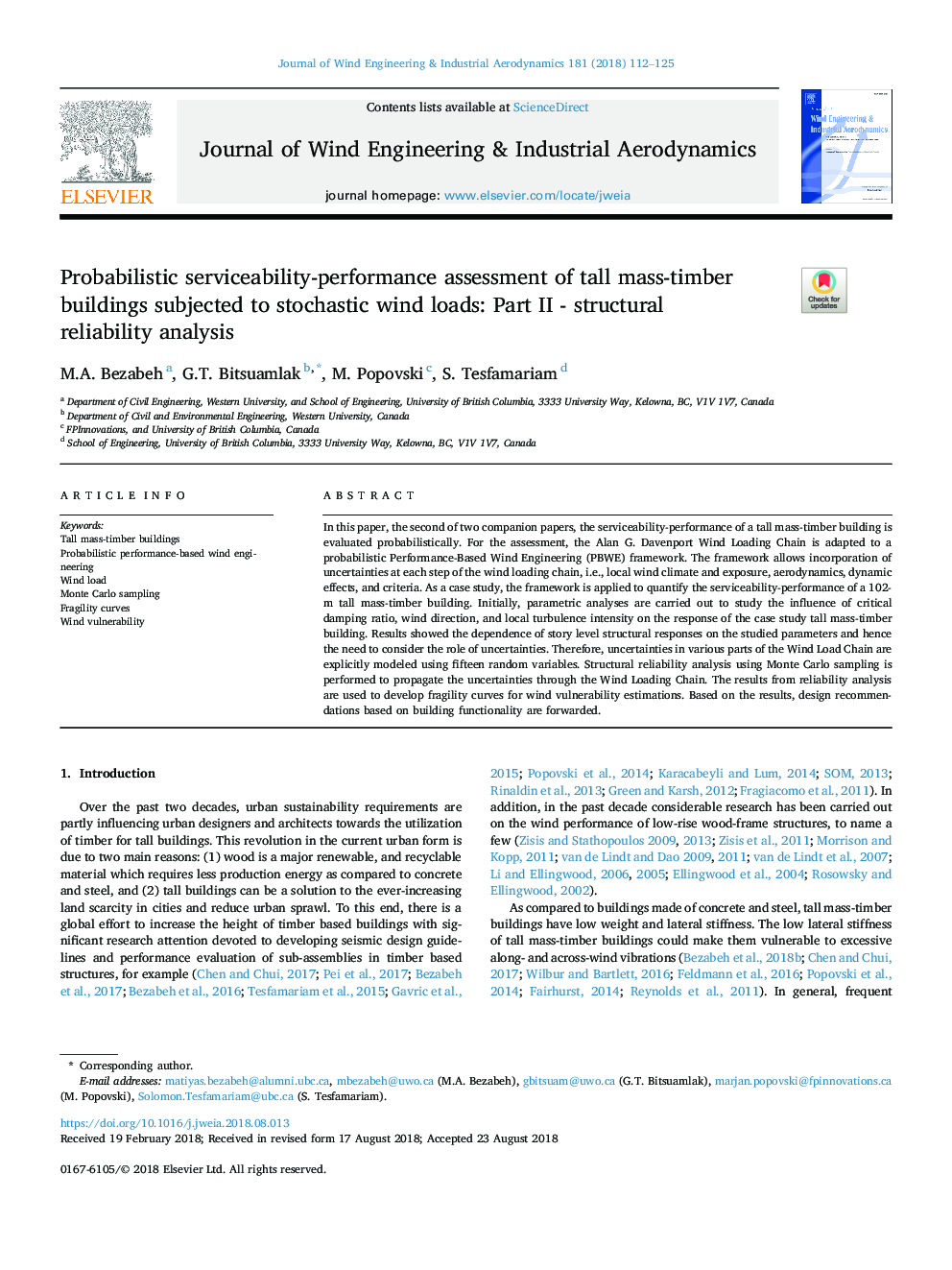| Article ID | Journal | Published Year | Pages | File Type |
|---|---|---|---|---|
| 10132055 | Journal of Wind Engineering and Industrial Aerodynamics | 2018 | 14 Pages |
Abstract
In this paper, the second of two companion papers, the serviceability-performance of a tall mass-timber building is evaluated probabilistically. For the assessment, the Alan G. Davenport Wind Loading Chain is adapted to a probabilistic Performance-Based Wind Engineering (PBWE) framework. The framework allows incorporation of uncertainties at each step of the wind loading chain, i.e., local wind climate and exposure, aerodynamics, dynamic effects, and criteria. As a case study, the framework is applied to quantify the serviceability-performance of a 102-m tall mass-timber building. Initially, parametric analyses are carried out to study the influence of critical damping ratio, wind direction, and local turbulence intensity on the response of the case study tall mass-timber building. Results showed the dependence of story level structural responses on the studied parameters and hence the need to consider the role of uncertainties. Therefore, uncertainties in various parts of the Wind Load Chain are explicitly modeled using fifteen random variables. Structural reliability analysis using Monte Carlo sampling is performed to propagate the uncertainties through the Wind Loading Chain. The results from reliability analysis are used to develop fragility curves for wind vulnerability estimations. Based on the results, design recommendations based on building functionality are forwarded.
Related Topics
Physical Sciences and Engineering
Energy
Renewable Energy, Sustainability and the Environment
Authors
M.A. Bezabeh, G.T. Bitsuamlak, M. Popovski, S. Tesfamariam,
